This is your very first post. Click the Edit link to modify or delete it, or start a new post. If you like, use this post to tell readers why you started this blog and what you plan to do with it.

This is the post excerpt.
This is your very first post. Click the Edit link to modify or delete it, or start a new post. If you like, use this post to tell readers why you started this blog and what you plan to do with it.

Source: All That Shines by PREM SINGH

Right from my childhood, the shining and sparkling things around fascinated me.
Embroidery done in zari, tilla, gotta-kinnãri, salma-sitãré, all added joy to the soul. A woman laden with jewelry held a special charm to me. Playing with the golden and silver sheets of paper was a pleasure. Decorating the walls with the painting of flowers and leaves in gold and silver was a passion for me. The use of such metallic colours on clay toys was a common phenomenon. The spirit of our fairs, festivals, customs and ceremonies are glow through this. Shining gumbads and kalash of Gurdwara’s and Mandir’s reminded me of the divinely powers. Palaces embellished with gold and silver denuded royal charm and grandeur.
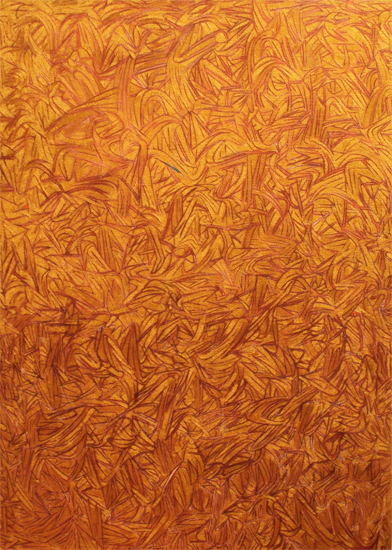
In all such manifestations the only purpose that we see is that of decoration.
Art awakened in me at an early age. This inspired me to have a closer look on the works of art created in the East and the West over the centuries. Gold leafs or its ghot were used by Indian artists for painting of mukats, ornaments, garments, borders, etc. in the art of miniature painting.
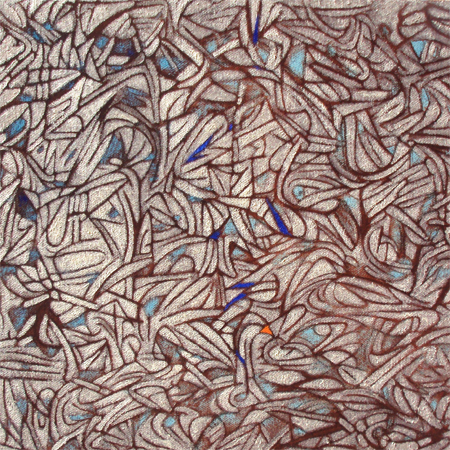
Most of this art was produced under the patronage of rajas and maharajas, so due consideration was accorded to their taste
and liking.
The advent of the modern era brought with it a new thinking which led to individual freedom. This newly acquired autonomy culminated in a new sensibility and gave the modern period a distinct identity.
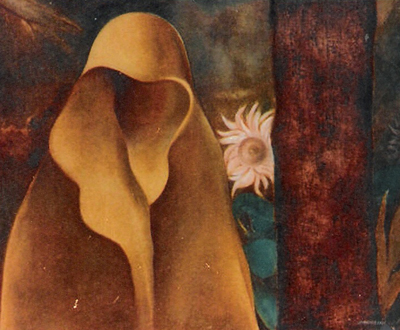
Though this new-found autonomy was opposed by the then conventional thinking, yet the latter could not stop the surge of creativity. The works of modern art though seen in ornamental frames in earlier times did reflect on the traditional mentality but it soon disappeared.
Here in the subcontinent, the use of gold and silver in our Mughal, Rajput and Pahari kalam was very realistic.
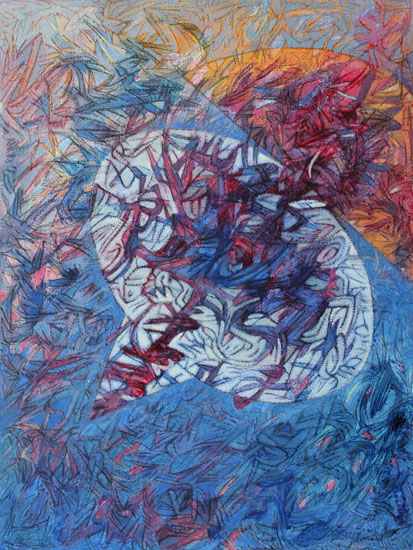
All this made me think about the use of gold, silver, copper and bronze beyond its conventional use and explore the tremendous possibilities hidden in these colours. This was also a part of my nature and also in my desire. Moreover, the inspiration of my art lies in nature and its eternal music. While enjoying this eternal music, I approach my canvas to sing my song on it. The whiteness of the canvas is scary to me. To ward off the scariness, I fill up the canvas with just one colour. That colour could be any. In the process, I discover in the web of my brush strokes a new rhythm lying beneath them. In such a vast array of strokes I record or register or compose by outlining them with charcoal. Soon my canvas wears a web of different tunes and tones.

In my new canvases, the viewer would find the play of colours – gold, silver, copper, bronze and pearl – in as varied a manner as possible. Like the shine of the sun and the moonlight change day and night into a spectrum of different emotions and feelings, thus evoking a special mood, colour and music to each one of them, I try to evoke the same through the shine and sparkle of my colours. An organic feel of the silent activity of nature, intensive chirping of the birds in the low light of morning and evening,
the transcendental music of light – all this and much more is an integral part of my creative quest.

Light plays in my painting. And in this play the changing tones, textures, hues and shades create a Rãgmala of its own. And in the shine and sparkle of the Rãgmala, I not only experience my childhood but also the realisation of my own growth.
कला में कुछ बनाने से बड़ा सुख होता है कुछ खोजना। अपनी कला यात्रा में आकृतियों और अमूर्तन के बीच आवाजाही के दौरान मैंने पाया है कि मानव आकृतियों को रचते समय भले ही मैं विभिन्न मनोभावों को व्यक…
Source: कला का सुख
कला में कुछ बनाने से बड़ा सुख होता है कुछ खोजना। अपनी कला यात्रा में आकृतियों और अमूर्तन के बीच आवाजाही के दौरान मैंने पाया है कि मानव आकृतियों को रचते समय भले ही मैं विभिन्न मनोभावों को व्यक्त करने का सुख पाता हूँ फिर भी कुछ छूट गया सा लगता है। इसके विपरीत जब कैनवास या कागज पर रंगों के साथ खेलता हूँ तो कईबार जो सामने आता है वह जैसे मुझे अंदर तक भर जाता है। यहाँ जे स्वामीनाथन की बात याद आती है कि कला जन्म नहीं लेती, वह उद्घाटित होती है। अमूर्तन में यह होता है। इससे मैं यह प्रमाणित करने का कोई प्रयास नहीं कर रहा कि अमूर्त कला अधिक महान होती है। सभी प्रकार की कलाओं का जीवन में समान महत्व है पर एक रचनाकार के रूप में मुझे अमूर्त कला अधिक खुशी देती है। यह एकदम निजी मामला है। बहुत सारे कलाकारों को मानवीय आकारों को रचने में अधिक सुख मिलता है। यहाँ फिर एक कलाकार की बात याद आती है। शिल्प कलाकार लतिका कट से एकबार बातचीत के समय जब मैंने पूछा कि वे अपने शिल्पों को अमूर्त क्यों रचती हैं क्या मानव आकारों में उनकी रूचि नहीं है तो उन्होंने जवाब दिया था कि हम अपने आसपास हरवक्त मनुष्य को ही देखते हैं। वे तो प्रकट हैं ही इसलिए मैं अपनी कला में उसे खोजती हूँ जो प्रकट नहीं है।

दरअसल हम अपने परिवेश में मनुष्य की उपस्थिति इतनी अधिक प्रभावी पाते हैं कि उससे अलग होकर कुछ देखना अनमना कर देता है। ज्यादातर दर्शक इसी मनस्थिति के होते हैं और इसीलिए उन्हें अमूर्त कला कम पसन्द आती है। यह एक स्वाभाविक स्थिति है कि हम वही देखना व पसन्द करना चाहते हैं जो हमारे जीवन के अनुभव का हिस्सा होता है। कुछ नया या अपरिचित दिखाई देने पर मन असहज होने लगता है, उसके साथ हम किसी प्रकार का सम्बन्ध स्थापित नहीं कर पाते। पर जो पहले से अस्तित्व में है वह तो है ही पर बहुत कुछ ऐसा भी होता है जो परिचित नहीं होता क्योंकि वह अप्रकट रहता है, अव्यक्त रहता है। एक कलाकार उसी प्रकट या अव्यक्त को खोजता है, विशेषरूप से अमूर्त कलाकार। साहित्य में भी यह होता है। वहां कथा साहित्य।एक तरह से आकृतिमूलक है जबकि कविता अमूर्त कला की तरह जिसमें कवि अव्यक्त या अप्रकट को उद्घाटित करने का प्रयास करता है।
इसे समझने के लिए हमें किसी चित्र के साथ संवाद करना होगा जिसका प्रथम चरण है इस बात को समझना की कलाकार की रचना प्रक्रिया क्या है। यह कभी भी किसी भी कलाकार के लिए आसान नहीं रहा कि वो साफ साफ अपनी रचना प्रक्रिया को समझा सके। साहित्य जिसमें भाषा ही सर्वस्व है, उसमें भी लेखकों के लिए अपनी रचना प्रक्रिया को व्यक्त करना रचने से अधिक मुश्किल रहा है। चित्र कला में और उसमें भी अमूर्त कला में तो यह और भी मुश्किल है क्योंकि यहाँ साफ साफ दिखाने को कुछ नहीं होता तो बताने को क्या होगा। मैं बात कर रहा हूँ उन अमूर्त कलाकारों की जो किसी भी प्रकार के सन्दर्भ से परे होकर रचते हैं, यहाँ तक कि उनके चित्रों में ज्यामितीय आकार भी नहीं होते और होते भी हैं तो उदघाटित होते हैं वे चित्र का आधार नहीं, प्रतिफल या उसका एक अंश होते हैं। बहुत बार ऐसा होता है कि कोई अमूर्त चित्र रचने की प्रक्रिया में कभी त्रिकोण या वृत्त जैसा आकार उद्घाटित हो जाता है। कई बार मैं उसे वैसा ही छोड़ देता हूँ तो कई बार इस सम्भावना को देखता हूँ कि मैं इसे कितने तरीकों से या कितने हिस्सों में विभाजित कर सकता हूँ। यह रचना प्रक्रिया की चरम स्थिति कही जा सकती है। पर रचना प्रक्रिया उस समय शुरू हो जाती है जब हम स्ट्रेचर को जोड़ कर उस पर कैनवास लगाते हैं। कला यही स शुरू हो जाती है। हालांकि आज के समय में कलाकार बाजार से तैयार कैनवास लेकर काम करते हैं। ऐसे कलाकारों की रचना प्रक्रिया कैनवास पर रंग लगाने के साथ शुरू होती है। ज्यादातर आकारों में काम करने वालों की रचना प्रक्रिया शुरू होते ही ख़त्म हो जाती है क्योंकि क्या बनाना है व कौन से रंग लगाने हैं यह पहले से तय किया गया होता है। इसके विपरीत अमूर्तन में कुछ भी पहले से तय नहीं होता। इसीलिए उसमें रचना प्रक्रिया लम्बी चलती है।
वेद प्रकाश भारद्वाज
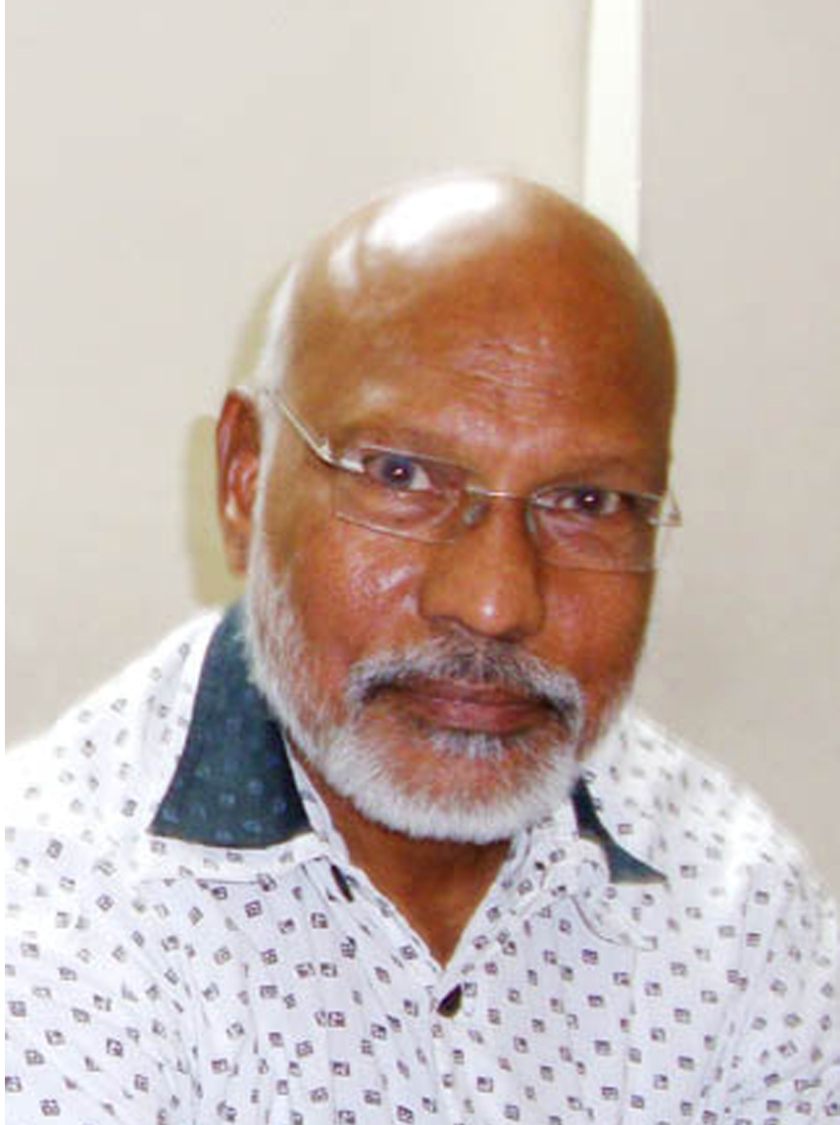
He is an active artist since 1975, and till today he accept herself as a learner; I am talking about Ramesh Anand from Dewas, (M.P.); he is always on a new path of expressions, not only in paintings, but in drawings also. When I travel in his art world, I surprised how he able to transform his style from figure to abstract and again figure, even both parellel also. In the last solo show in New Delhi, he exhibited abstract paintings and figurative drawings. It will be very difficult to determine that which is the best. But I think this question is irrelevant in case of Ramesh Anand, because both have same importance for his quest.
He started his creative journey in 70s as a figurative painter. In that period he explores human relationship and nature. Nature and human nature both are play significant role in his art since beginning. He observes human nature very deeply and portrays in paintings. Some paintings from that period gives indication of his future. He paints some monuments in those paintings with figures. He feels those monuments are live with human presence only, but later he realize that the empty monuments has also a life which can be feel.

monuments and other architectural structures. Thats gives him a new direction to search and feel life in still objects and forms. That was a turning point in his quest. Monuments and other structures was clear in those paintings which later on diluted in colors and strokes. Here we see a new Ramesh Anand, searching new and minimal forms to express life beyond visible world. He started exploring total abstraction, which is not a easy task for artists. He take a small part of a structure and extended on canvas. Opacity and transparency of colors create an eminence effect and gives an illusion of light and dark which is the reflection of life, sometimes dark sometimes light.
He admitted that since his childhood, he start with basic shapes because they attract him. Later he understand that the basic always remain in our life. He loves his surrounding specially monuments, mountains, revers and trees. In drawings, he draws all them as they visible but when he paints, images changed. He visualization them in a different perspective, all of them transform in shapes and color composition.
His technique is very simple; he just adds one colour to another or one tone to another tone and creates a sensible painting. Overlapping colours give a dramatic effect to his paintings. The light and dark effect established a balanced perspective in paintings. It is also create a monumental effect. His works ink on paper is also very important. He uses the transparency against the opaque which create a magical effect.
Ved Prakash Bhardwaj
Ved prakash bhardwaj
If a section of a city could be taken like a spray of rain or a blossom of light in street and on buildings, it would come out like the purnendu mandals paintings with most of …
Source: Purnendu Mandal: juice of life
It is easy to draw a straight line but very difficult to maintain its character in a group specially when they become part of a structure. Line and structure have different characters and many time…
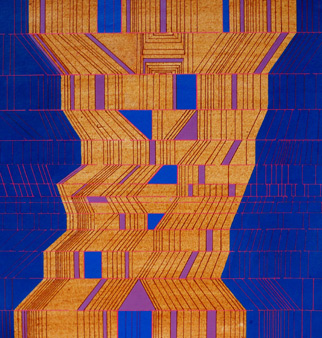
He starts by drawing a line in unbounded space and slowly the space transform into a stage where lines are dancing and making different shapes, reflecting the development of human society. Human being have always wish to bound the time and space which is impossible till today, but an artist can do it symbolically in his creation, and it is an unending process. An art work has a starting point but doesnt have an ending point; ending means there is nothing left for us to do. Sahnis paintings are a perfect combination of painting and drawing which have unending lines, reflecting endless hope and life. He moves lines in different directions, sometime collator and sometime they cross each-other and leave some spaces blank to create an concrete image. It is difficult to identify any starting or ending point in his lines. That is why line based art become an endless journey for him.
Lines in art are not a new thing in India. In our folk and tribal art, it has a long practice to create images with lines. It is inherent in life, so they do not need any technical definition for that, but west always need that and due to our educational system we follow west. People relate Sahnis art to Kinetic or OP art which comes from west. Kinetic or OP art is a technic which can help to build an image with lines and create fusion. But Sahnis art is not a technical quest, it is more than that.
In the west, most of OP artists use total surface as a positive space and very few try to balance between positive and negative space. Optical Illusion is the main target for western artists and that practice still continues. But Sahni follows the Indian ideology that emphasizes the balancing of negative and positive aspects in life. He creates space within space, a negative space between positive spaces and which becomes his speciality. Sahni creates illusion of negative and positive space many times in his works. In his earlier paintings the total space is full of movements, but in recent years, I want to underline a major change in his works and that is the balance of movement and steadiness of space. As a young person, we are all enthusiastic to give a movement to life, we try to fill life with full of emotions, relations, creation and whatever we can do, but with maturity and experience we understand the importance of a blank space in life. The blank space, whether it will be narrow or broad, without any movement gives us a relaxation; we find a space which is only for us. We try to save some little time from social life for us or we can say that we always try to shield a narrow corner in the crowd, like an inner space within outer space. I think that is the reason Sahni uses a different composition from his earlier paintings.
He uses different tones of colours and texture on some part of his paintings which gives a different feeling to viewers, that evokes the moods and emotions and lines give them direction. He says A straight line is pure, unsentimental and unconditional of any subjective feelings. However, when placed in conjunction with other lines, it may evoke different emotions and moods.
Previously, he used direct lines on canvas, but today he has developed a different technique. He uses masking tape of different thickness to create different lines, and also some tools to create lines. For that first he paints and then draws lines with his tools and get lines which looks like dancing. He plays with lines and shapes in space and capture the spontaneous movements of them, but some time he directes the lines intellectually and arrange them with shapes. Even, sometime he cuts a finish work into equal pieces and then arranged and reassembled it in a different order to discover new images. He created a series reflection through that process.
He knows and accepts that his images are not pre-conceived, so he always looked each pattern and lines as a different identity, identity of moods and emotions which are changing from time to time with situation. Each line or group of lines and shapes are reflection of human conditions in a particular situation. Lines come close to each other and go away from each other, horizontal and vertical lines, all reflection of physiological and psychological human conditions.
I am seeing his paintings for the last ten years. Simplicity of his personality, which reflects in his art captivate me. He is very clear in his thoughts and art, and very noble to hear others on his art, as well as accepting others creations. This nobility makes him a great person and artist.
Ved prakash bhardwaj
Ved prakash bhardwaj If a section of a city could be taken like a spray of rain or a blossom of light in street and on buildings, it would come out like the purnendu mandals paintings with most of …
Source: Purnendu Mandal: juice of life
Ved prakash bhardwaj
If a section of a city could be taken like a spray of rain or a blossom of light in street and on buildings, it would come out like the purnendu mandals paintings with most of the color and all of the juice gone, but with a new clarity in the textured version of a coloured pattern originally supplied by life.
City life always inspired him whether it was a vegetable shop or a narrow street of city or river side. In 2006-7, he creates some paintings in that he portrays the existence of girl child and boys. He portrays the dark side of childrens life in our society. Disappointment of joy is a common condition in our society but there is a little hope always exists in life. Purnendu paint both in one painting, sometime, and single also, but his approach is not pessimist. He search positive aspect of life in every condition, even in worst situation he look some good sign which give him power to create beautiful paintings.
Purnendu has aptly demonstrated his command over the medium whether it is oil, acrylic or water colour. Even he proved his command on charcoal and pen&ink drawings also. He mostly uses roller to create textural effect. Today roller is a very common tool but most of artists use it for texture only, but he uses it for especial effect of rain and reflection of light thats show that how much command and control he have on the technique. But technique is not an art, its only a right way of creation, and purnendu know it very well so he never allow to technique to affected his thoughts. He achieves the command over the technique for a better expression and that is the reason the soul of painting is always powerful than technique in his artistic practice, whether he paint figurative or abstract cityscape.
His ‘impressionist’ style and outlook is clearly evident in the work through thin yet visible brush strokes, openness of compositions, and emphasis on accurate depiction of light in the changing qualities over a passage of time, normal subject matter and inclusion of movement as an important element of human perception through vivid angles. His skillful use of brush, rollers and other techniques proudly highlight the expected enlightenment and visual panorama of extravagance through relevant motifs, idioms and metaphors.
His work on ‘cityscapes’ highlights ‘Trams’ in urban areas of Kolkata with added visual effects of the seasonal changes like bright sunshine, rains, misty effects and fog etc., at different time periods in a day like morning, evening, night. It is create a dramatic effect on streets as well as buildings. His artistic displays of apt impressions of monumental heritages as well as multistory buildings and other relevant scenario in the background produce the desired central focus on Trams and relevant light effects. This series portrays the old and modern Kolkata at the same time. Tram is a symbol of historical city, and multistory buildings and cars represent the current scenario.
His colour pellet is very important aspect of his latest paintings. At the early time, he uses all colours which comfortable to the subject, but latter he acquire the skill to how to use any colour to any subject. The result is that he uses red, blue and green color in cityscape series. He uses red colour in many paintings which is not to easy but he did it well, even use of red with blue in some paintings is remarkable.